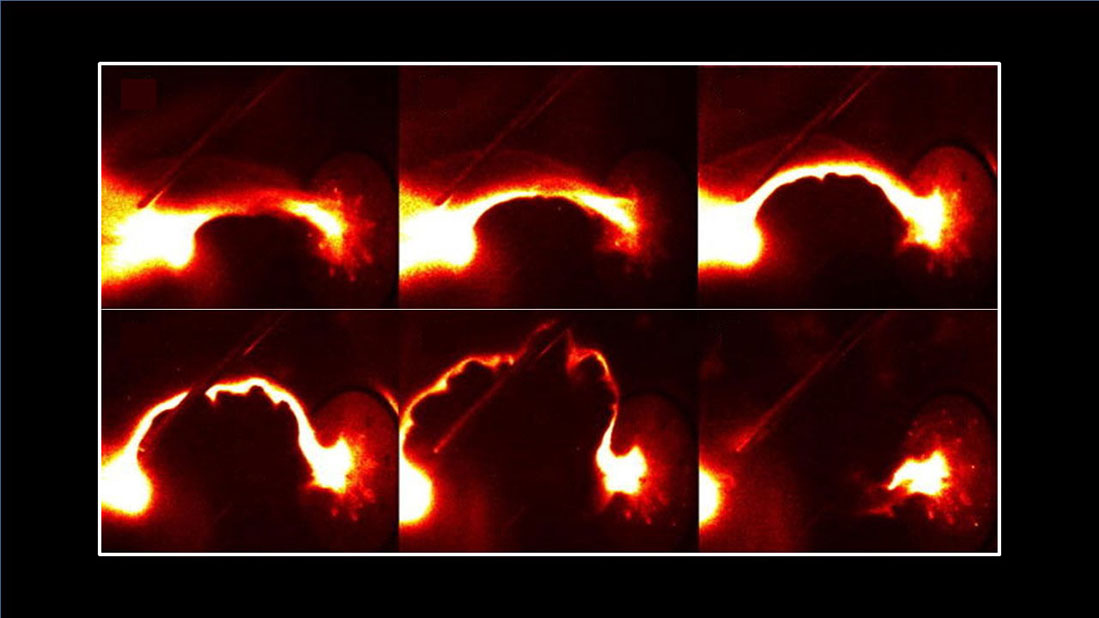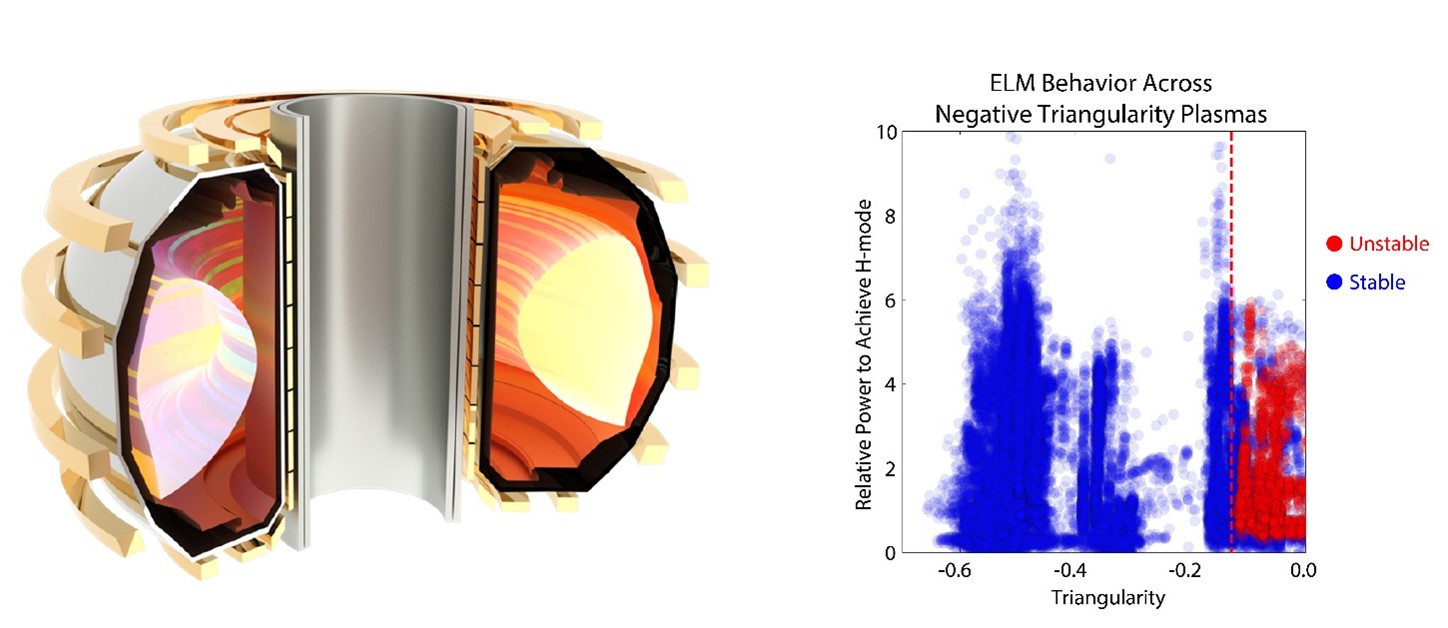High-Energy X-Ray Bursts from Low-Energy Plasma
Scientists discover why solar flares produce X-rays; a few electrons avoid collisions and accelerate to produce a microsecond burst.

The Science
Solar flares shouldn’t produce X-rays, but they do. Why? The one-size-fits-all approach to electron collisions misses a lucky few that lead to an intense X-ray burst. Scientists thought there were too many electron-scattering collisions in such cold plasmas for electrons to be accelerated to high energy and radiate X-rays. While most of the electrons in a cold plasma collide before they can accelerate, it’s possible that a few don’t collide. These particles are like warriors who endure a sequence of deadly battles but survive each encounter and develop experience to have a better chance of surviving the next one.
The Impact
For a long time, scientists have observed X-rays and energetic particles in solar flares and other situations where the plasma is supposed to be too collisional for these phenomena to occur. X-rays might also occur in lightning and certain fusion energy devices. Astrophysical jets might produce high-energy particle beams (gamma rays). The team’s discovery shows that scientists need to take detailed statistics of collisions into account. A one-size-fits-all approach misses the lucky few electrons that do not collide and accelerate to attain large kinetic energy.
Summary
Scientists observed a burst of X-rays from a laboratory plasma jet. This burst was unexpected because the plasma jet was relatively cold and thus highly collisional. A simple way to think about a cold, collisional plasma is that there is too much friction for electrons to be accelerated to high energy and radiate X-rays because friction corresponds to collisions that scatter electrons. While the great majority of electrons in a cold plasma collide before they can accelerate to high energy, it’s possible that a lucky few don’t. Collisions are quantified statistically by the mean free path, which is the distance over which a particle has a two-thirds chance of colliding and so losing all its directed momentum. The statistics thus imply that a particle has a one-third chance of not colliding when traveling a mean free path. Collisions are statistical, so there is always a probability of not colliding. The few electrons that initially do not collide become less likely to collide again, so a small cohort is accelerated to very high energy. A non-colliding particle will be accelerated by an electric field if present and so will attain more directed kinetic energy after traveling the mean free path. Because mean free path increases as energy squared, the energy gained in the next mean free path will be larger for the one-third of particles that do not collide. After a while, there’s a tiny group of energetic particles that never collided and, because of their high energy, can radiate X-rays. These particles are like soldiers who endure a sequence of deadly battles but luckily survive each one and develop experience to have a better chance of surviving the next encounter.
The X-ray bursts correlate with the plasma jet diameter being choked by ripples, like those that occur at the interface separating a heavy fluid on top of a lighter fluid. The ripples choke the jet electric current to produce an electric field that accelerates electrons. This is akin to putting one’s thumb on a garden hose to choke the water flow and make a large pressure drop that accelerates a small amount of water to high velocity to make a spray. The team’s discovery of how these microsecond X-ray bursts form shows detailed collision statistics are important when dealing with cold plasmas.
Contact
Paul M. Bellan
California Institute of Technology
pbellan@caltech.edu
Funding
The research was funded by the National Science Foundation/Department of Energy Partnership in Basic Plasma Science and Engineering via grants from the Department of Energy, Office of Science, Fusion Energy Sciences and from the Air Force Office of Scientific Research.
Publications
R.S. Marshall, M.J. Flynn, and P.M. Bellan, “Hard X-ray bursts observed in association with Rayleigh-Taylor instigated current disruption in a solar-relevant lab experiment.” Physics of Plasmas 25, 112101 (2018). [DOI: 10.1063/1.5054927]
Related Links
Bellan Plasma Group at CalTech
Highlight Categories
Program: FES
Performer: University
Additional: Collaborations , Non-DOE Interagency Collaboration



